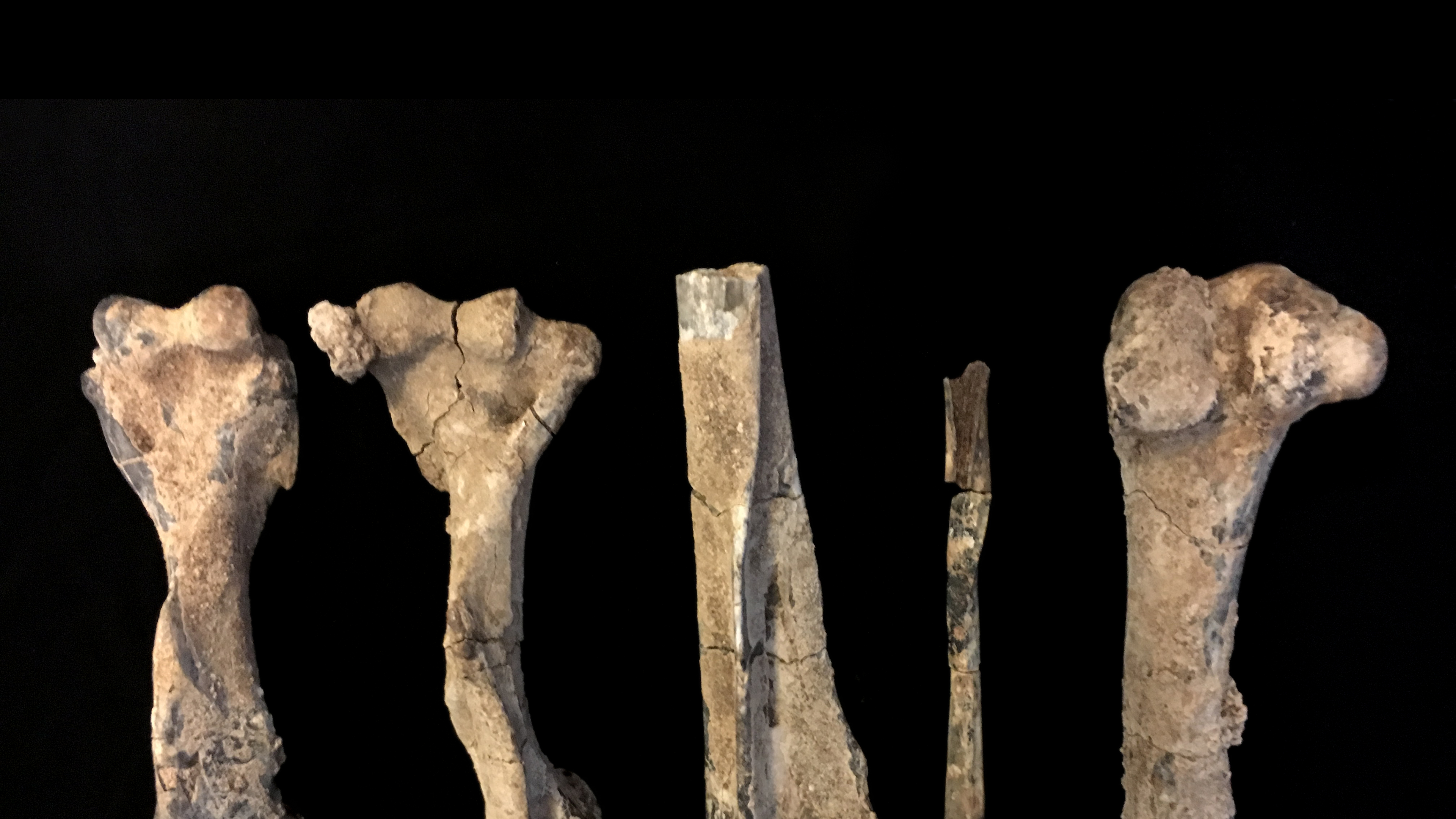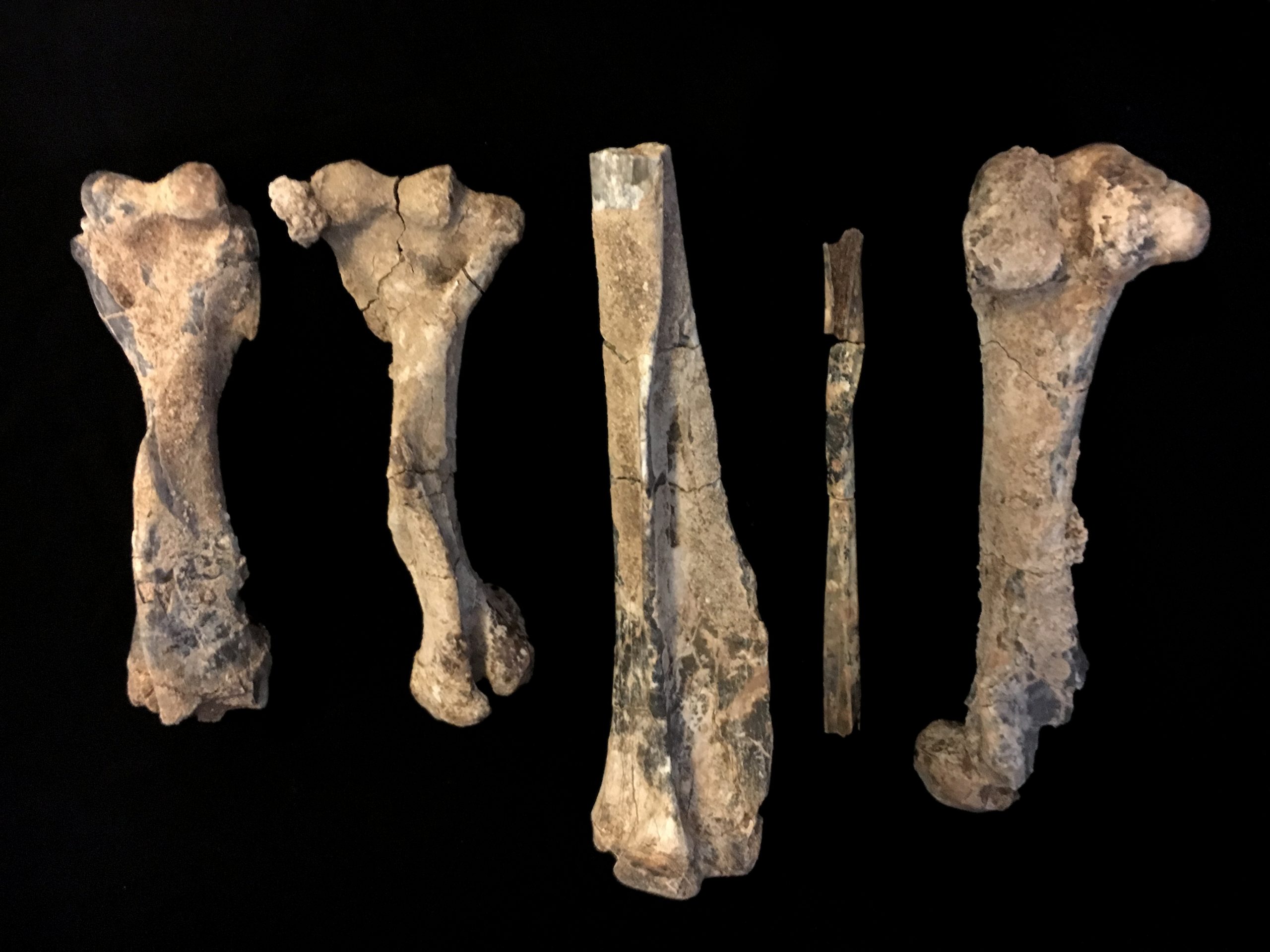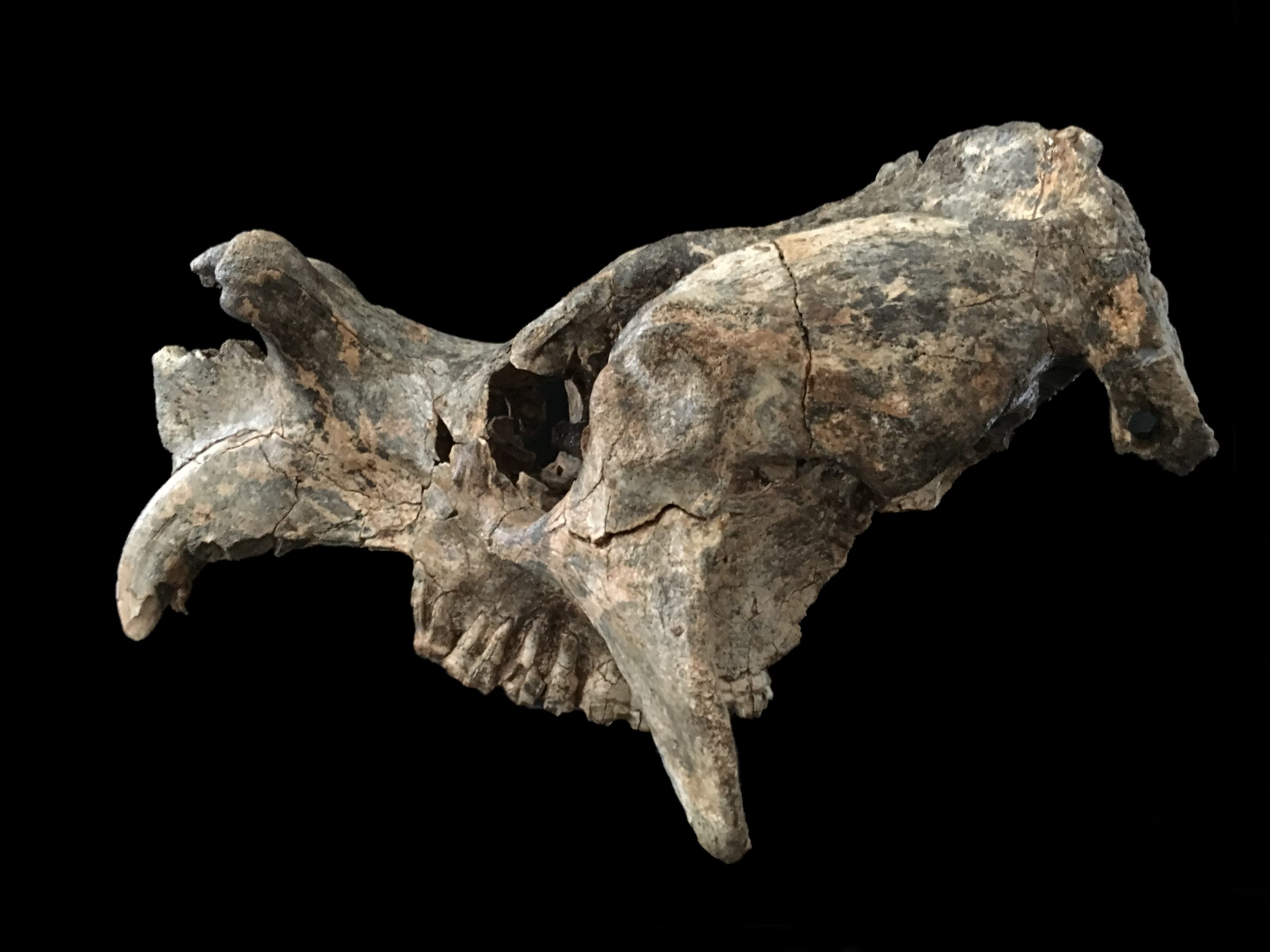Walk, Don’t Hop
Fossilised Bones of a Giant, Walking Kangaroo
Cattle and sheep now roam the paddocks, and wheat crops stretch as far as the eye can see, but the area now known as Tambar Springs on the North West Slopes region was long the domain of enormous, flat-nosed kangaroos: Procoptodon goliah. Weighing over 200kg, it used its height of 2m to graze from tall trees.
Knowing the bouncy habits of kangaroos today, you might wonder how high this megafauna monster could hop. But Procoptodon fossils reveal something curious – that this ancient animal was more inclined to walk, using its tail as a fifth limb.
These fossilised tibula, fibula, femur and humerus (or leg and arm bones) once enabled a Procoptodon to do what it did best – walking and grabbing branches to bring them closer for grazing on their leaves.
Procoptodon goliah fossils have been discovered in arid and semi-arid areas across Australia, where the animals lived during the Pleistocene epoch (also called the Ice Age), before becoming extinct about 15,000 years ago. At Tambar Springs, bones of other extinct megafauna have also been found, including a Diprotodon rib with a hole made by a spear.
This ‘smoking gun’ evidence tells us that the ancestors of the Kamilaroi people also lived in the area among these beasts, and that they hunted Diprotodon (and possibly Procoptodon too) for food. But the animals’ demise is thought to have resulted from volatile climate changes, rather than just over-hunting.
The first Australians lived alongside megafauna for 30,000 years and ancient stories still survive of a large, long-armed kangaroo that attacked humans long ago.





